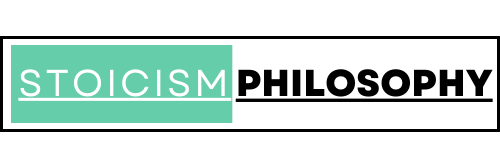Stoicism and Technology: Stoicism, an ancient Greek philosophy founded by Zeno of Citium in Athens around 300 BCE, emphasizes the importance of living in accordance with nature and virtue, focusing on personal ethics and the universal law of nature.
Stoicism teaches the development of self-control and fortitude as a means of overcoming destructive emotions.
On the other hand, technology, a term derived from the Greek word “techne,” refers to the application of scientific knowledge for practical purposes.
The intersection of stoicism and technology has been a subject of interest for scholars and practitioners alike, as both share the common goal of improving the human condition.
This article will delve into the history, principles, modern applications, and critiques of stoicism and technology, highlighting their shared values and potential synergies.
Stoicism and Technology:
History
Stoicism, as an ancient philosophy, has undergone various transformations throughout history. It has been adapted and reinterpreted by different philosophers, including Seneca, Epictetus, and Marcus Aurelius.
Stoicism’s emphasis on personal ethics and the universal law of nature has influenced various aspects of Western thought, including Christianity and modern philosophy.
Technology, on the other hand, has a more recent history. The term “technology” was first used in the 15th century to refer to the study of the arts and sciences. Over the centuries, technology has evolved from simple tools and machines to complex systems and networks.
The Industrial Revolution in the 18th and 19th centuries marked a significant turning point in the development of technology, leading to the mass production of goods and the rise of modern industry.
Principles
Stoicism and technology share several principles that are essential for personal growth and societal progress. Some of these principles include:
- Virtue: Stoicism emphasizes the importance of virtue, which is the highest form of human excellence. Similarly, technology can be seen as a tool for promoting virtue by enabling individuals to develop their skills and knowledge.
- Reason: Stoicism encourages individuals to use reason to understand the world and their place in it. Technology, with its reliance on scientific knowledge and rational thinking, can be seen as a tool for enhancing human reason.
- Adaptation: Stoicism teaches individuals to adapt to the world as it is, rather than trying to change it. Technology, with its ability to adapt to changing circumstances, can be seen as a tool for helping individuals adapt to the world.
- Resilience: Stoicism emphasizes the importance of resilience in the face of adversity. Technology, with its ability to provide solutions to problems and improve efficiency, can be seen as a tool for enhancing resilience.
Modern Applications
Stoicism and technology have found modern applications in various fields, including psychology, education, and business. Some of these applications include:
- Stoicism in Psychology: Stoicism’s emphasis on personal ethics and the development of self-control and fortitude has found applications in modern psychology, particularly in the field of cognitive-behavioral therapy. Stoic principles, such as focusing on what is within one’s control and accepting what is outside of one’s control, can be helpful in managing anxiety and depression.
- Stoicism in Education: Stoicism’s emphasis on reason and the development of knowledge has found applications in modern education, particularly in the field of critical thinking. Stoic principles, such as focusing on the essentials and ignoring the non-essentials, can be helpful in developing effective study habits.
- Stoicism in Business: Stoicism’s emphasis on resilience and adaptability has found applications in modern business, particularly in the field of crisis management. Stoic principles, such as focusing on what is within one’s control and accepting what is outside of one’s control, can be helpful in managing unexpected events and maintaining a positive attitude.
Critiques
Despite their shared values and potential synergies, stoicism and technology have also faced critiques from various perspectives. Some of these critiques include:
- Stoicism and Technology: Some critics argue that stoicism and technology are incompatible, as stoicism emphasizes the importance of living in accordance with nature, while technology often disrupts natural processes. However, others argue that technology can be used to enhance human life and promote stoic virtues.
- Stoicism and Modern Life: Some critics argue that stoicism is outdated and irrelevant in modern life, as it was developed in a different historical context. However, others argue that stoicism’s emphasis on personal ethics and the development of self-control and fortitude is more relevant than ever in today’s fast-paced and complex world.
- Technology and Modern Life: Some critics argue that technology has led to a decline in human values, such as empathy and compassion. However, others argue that technology can be used to enhance human values and promote social connections.
Conclusion
Stoicism and technology, despite their differences in origin and scope, share several principles that are essential for personal growth and societal progress. Stoicism’s emphasis on personal ethics, reason, adaptation, and resilience has found modern applications in various fields, including psychology, education, and business.
Similarly, technology’s ability to adapt to changing circumstances and enhance human reason and skills has led to its widespread use in various aspects of modern life.
However, stoicism and technology have also faced critiques from various perspectives, highlighting the need for a balanced approach to their integration.
By understanding the shared values and potential synergies of stoicism and technology, we can work towards a future that promotes human flourishing and sustainability.
